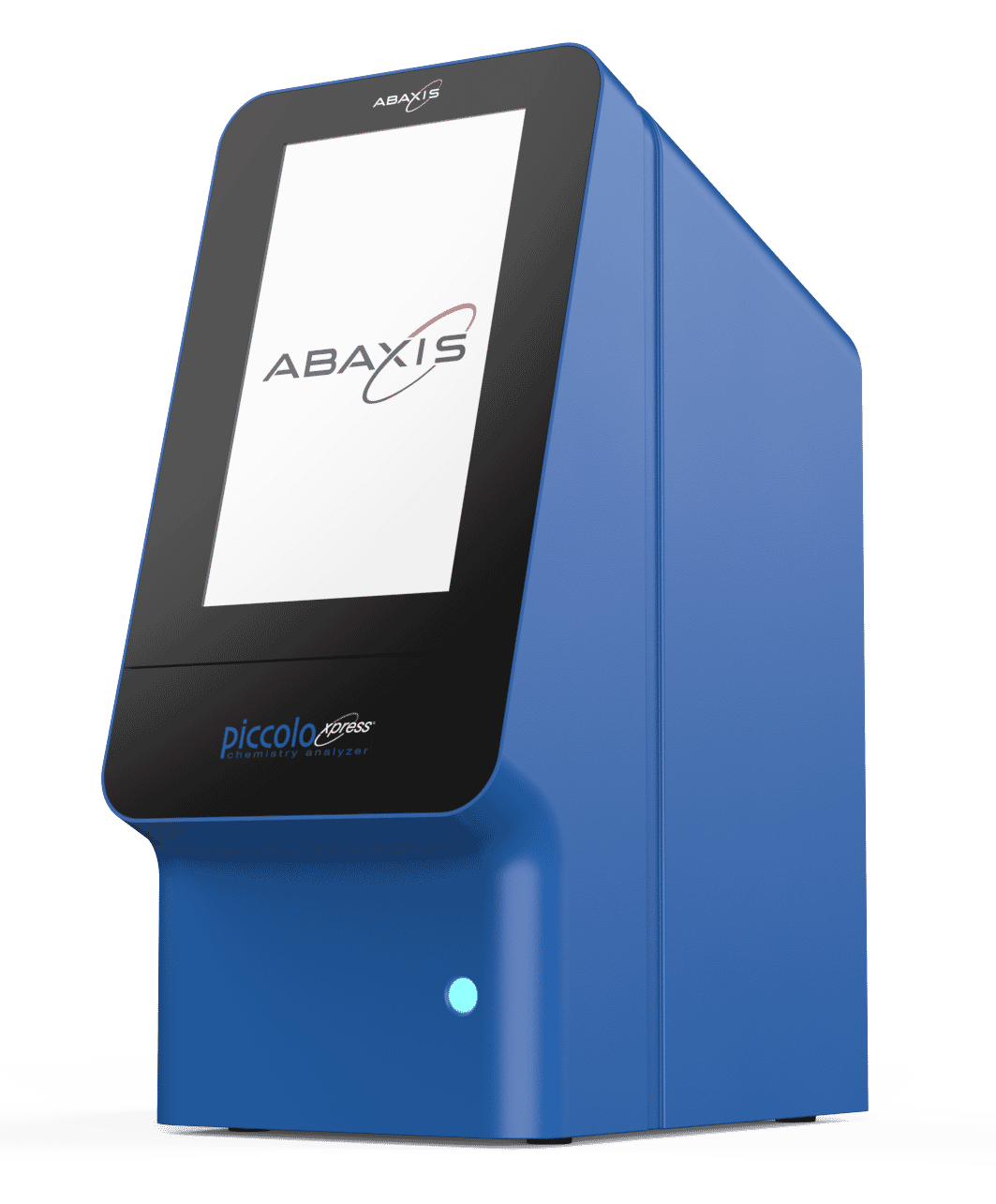Small in size yet big on accuracy, reliability1 and reproducibility
More Efficient Visits
With the Piccolo’s speed and broad menu of lab-accurate1 chemistry tests, care providers can diagnose and treat in a single visit – thereby helping increase case efficiency, practice throughput, patient satisfaction2 and staff efficiency.
Increases Patient Satisfaction
With the Piccolo deployed in the patient setting, care providers can diagnose and treat conditions in a single patient visit. This shortens the time from presentation to treatment planning, and patients begin therapies faster, with greater compliance and satisfaction – which are keys to a successful clinical outcome.
Expanded Capabilities
Clinically, there’s no doubt to the usefulness of the Piccolo menu. Confidently monitor your prescribed medications and treatment regimens with a battery of diagnostic-grade test results for metabolic function, liver, kidney, lipids, enzymes, minerals and more.
Reimbursable Panels
In the US and other world markets with multi-payer systems, Piccolo panels are reimbursed by most private insurers and by government healthcare agencies. Combined with greater efficiencies in care delivery and improved outcomes, the Piccolo can contribute to overall practice profitability.
Testing is Easy:
From Sample to Result in 3 Simple Steps
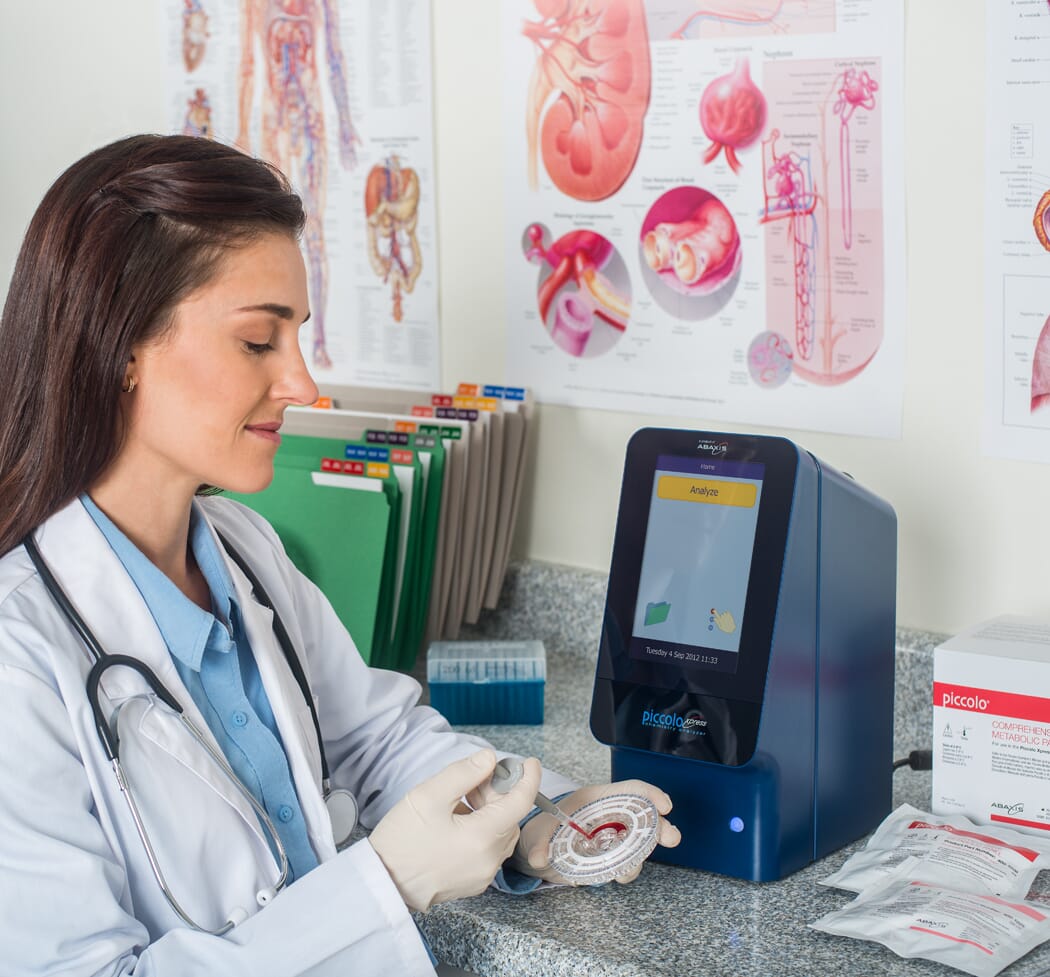
Step 1: Add Sample
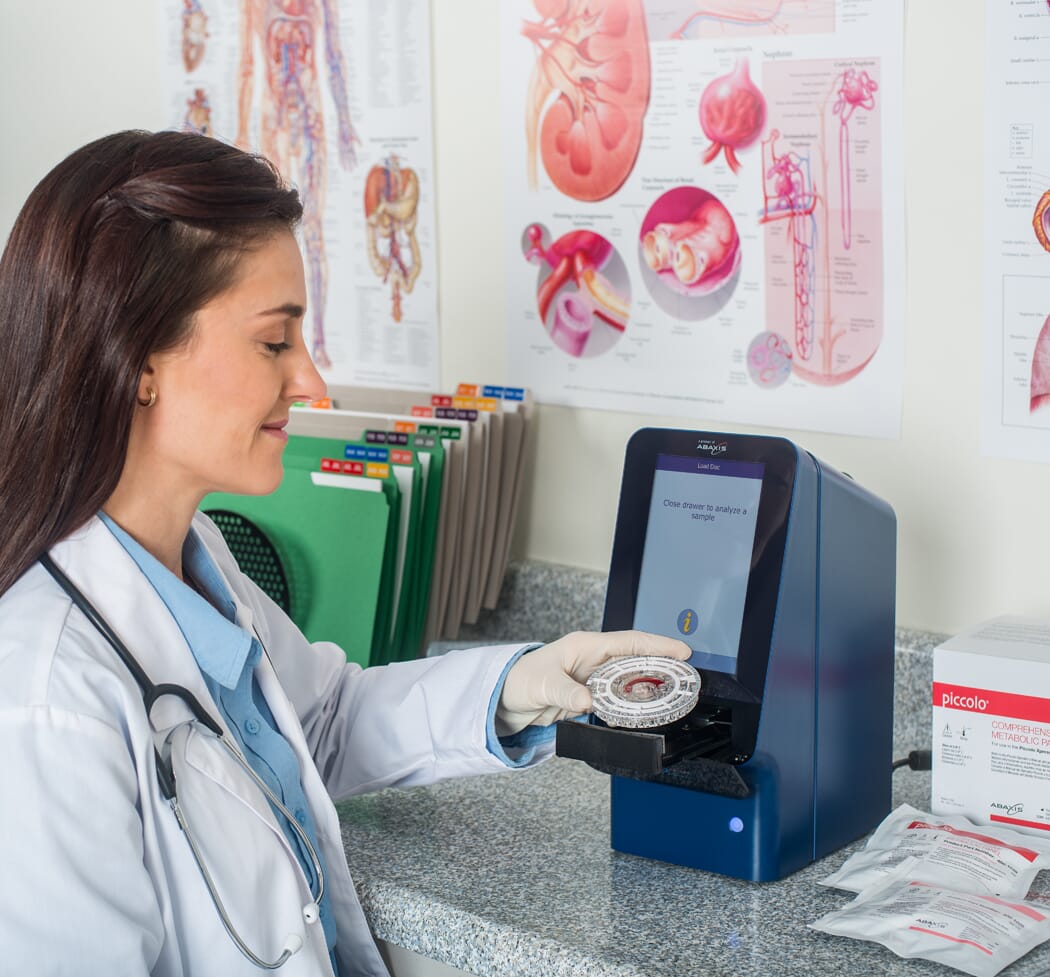
Step 2: Insert Rotor
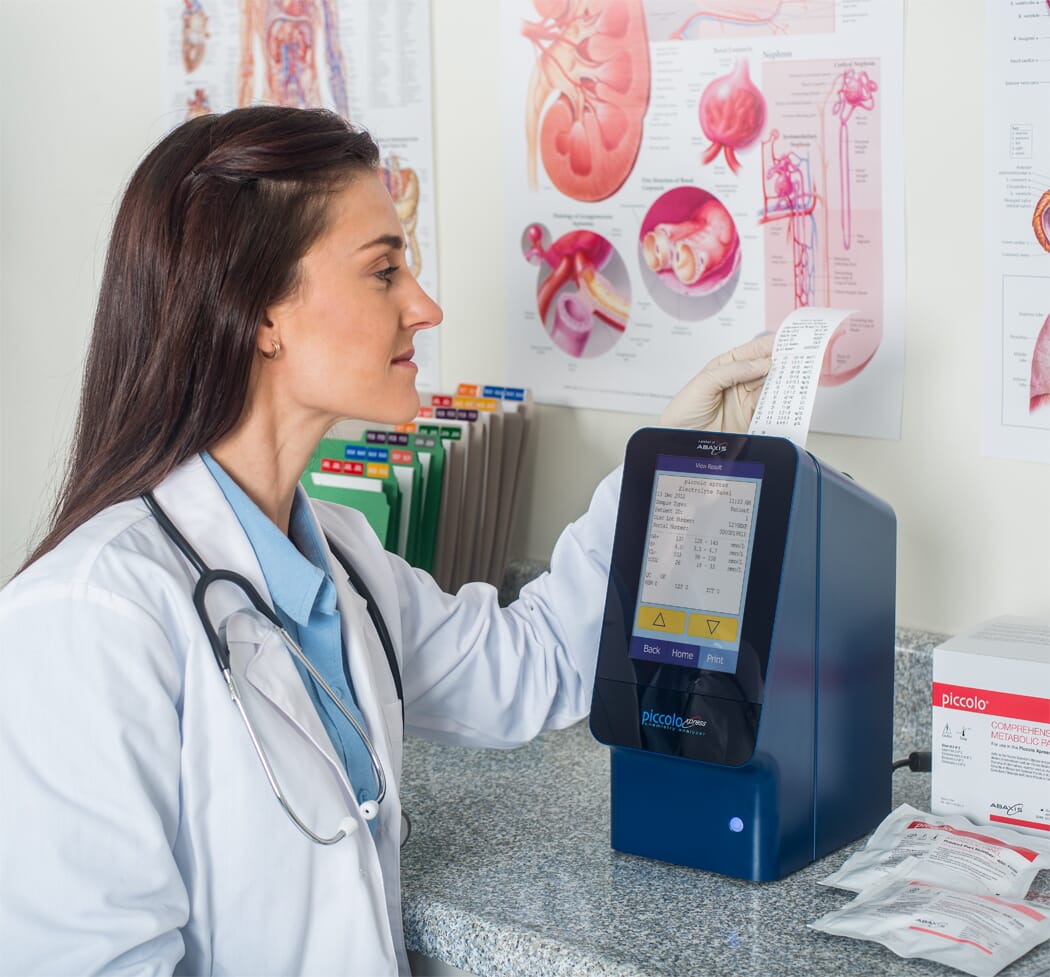
Step 3: Read Results
Specifications
| Weight | Analyzer – 5.1 kg (11.2 lbs) Power Adapter – 0.7 kg (1.6 lbs) |
|---|---|
| Power Adapter | 0.7 kg (1.6 lbs) |
| Power Requirements | 100-240 volts AC; 50-60 Hz; or 15 volts DC, 5.0A |
| Sample Size | 0.1cc (100 µl) |
| Sample Type | Lithium heparin, whole blood, serum or plasma |
| Test Time | Approximately 12 minutes |
| Quality Control Features | Built-in intelligent Quality Control (iQC®) system |
| Communication | Bi-directional input/output |
| Consumables | 8-cm diameter, single-use, self-contained plastic chemistry reagent discs. Each disc contains all reagents needed to perform a panel of tests on a single sample |
| Data Input Display | 10-digit numeric –VGA color touchscreen |
| Printer | Built in thermal printer with adhesive backed paper External Printer/LIS/EMR capable |
| Memory capacity | Up to 5000 patient and quality control results |
| Mode of Operation | Continuous |
| Protection Against Ingress of Fluids | Ordinary equipment (IPXO) |
| Analyzer Software | Comprised of two matched programs; one processes the information and controls the measurement engine itself, the other reports analyte concentrations. It stores data related to each run (time, date, user ID, patient results, control data) and results can be uploaded to a computer using USB Ports |
| Analyzer Hardware | Xenon arc stroboscopic lamp and a beam-splitter/detector read nine wavelengths 16-bit analog-to-digital converter used in signal processing Two microprocessors control analyzer functions Heater maintains disc at 37 ± 1o C during reaction portion of analysis |
| Ambient Operating Temperature Range | 15-32° C (59-90° F) |
| Reaction Temperature | 37° C (98.6° F) |
| Operating Humidity | 8-80%, noncondensing |
| Thermal Protection Rating | 70° C (158° F) |
| Dimensions | Height – 12.08in / 32.4cm Width – 5.87in / 14.9cm Depth – 8.27in / 21.0cm |
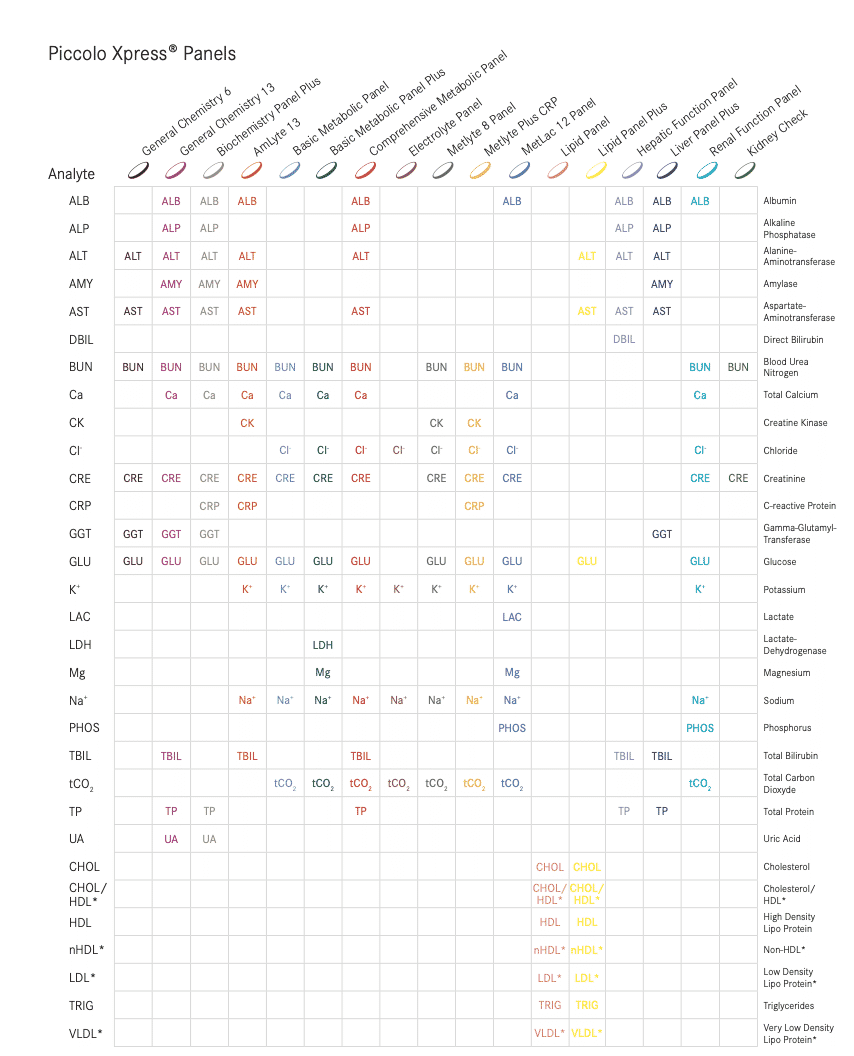
17 Complete Chemistry Panels
31 Tests
11 CLIA Waived
- References:
- 1 Data on file.
- 2 Patient satisfaction with point-of-care laboratory testing: report of a quality improvement program in an ambulatory practice of an academic medical center, 2013, Crocker et al.
